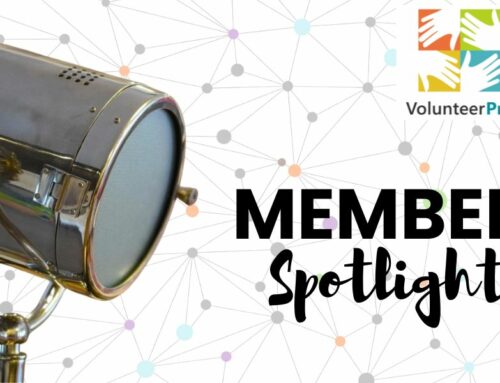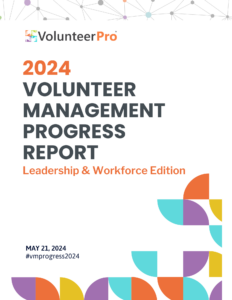
How to Plot Your Volunteer Roles Like a Champion
If you are a leader of volunteers, the fastest way to get a jump on each year is to plot out your agency’s volunteer roles for the coming year.
Proactively. Ahead of time. That is, BEFORE they are needed.
This goes for everyone, but is particularly true for those of you who supply volunteers to other departments across your agency.
If you’re tired of spinning your wheels, taking this one simple step can reduce your stress. It’ll give you peace of mind that you’ve got things figured out. You’ll have a plan in place and a global view of what you’ll achieve.
And, this knowledge will give you a solid feeling of confidence.
And, your own sense of empowerment is more vital than you think. People (like you) who must rely on their ability to influence others for a living, without positional power to lean on, have a tough row to hoe without a sense of their own efficacy.
Having a plan will strengthen your outlook and reassure those around you.
The Benefits of Proactively Planning Your Volunteer Roles
Launching your planning ahead of time will help with several other things, too …
- Get a quick sense of whether or not it’s doable with your current model or staffing (and whether or not it’s time to set limits or advocate for greater support)
- Have better intel on when you need to focus on your recruitment campaigns (and not other things) in the coming year
- Gain a clearer picture of the kinds of people you’ll want to cultivate for volunteer opportunities and can set a plan to build connections with them
- Be able to plan the kinds of trainings you’ll need to offer to effectively onboard, prepare, and support volunteers as they serve
- You can think through whether you want to enlist volunteer leaders in helping you prepare their peers for success
- Have the time to think about where you might expand volunteer roles in new and innovative areas
- Conversely, you can plan ahead to phase out roles that are no longer needed or aren’t working well for volunteers
- Get your co-workers thinking proactively, versus reactively, about their needs and reduce the number of “surprise requests” for volunteers
- Have a cohesive plan to present to your leadership and board to make a more compelling request for the budget you needed to reach your goals
This is only a short list of the benefits of this kind of planning can bring about.
Seriously. This is powerful stuff.
Knowing the number of supporters you need, with which skills, in which volunteer roles, is the cornerstone against which all your future program bricks will be laid for the year. If it’s well planned, it will set you up well for success in turn.
But, if you’re insourcing volunteers to other departments — or if people other than you will be responsible for supervising volunteers — you’ll need to get them onboard. The best way to do this is to get them involved in your planning process right from the get go.
Getting Your Co-Workers Onboard
When you start your planning, set up meetings with everyone with whom you will placing volunteers in the coming year.
This is how and when you start setting limits on your time and energy for the coming year. So you need to be clear, direct, and helpful. You are looking forward to “taking their orders” (their words, most likely, not yours) and brainstorming the best ways to utilize this fantastic human resource your agency is so grateful to have.
Let them know that THIS is the time you will be planning, not next month, next year, or when they decide they need volunteers. Let them know that you will be prioritizing your volunteer recruitment around the roles that are on your plan. If the role isn’t on the list, you may or may not have time to devote to it.
Your demeanor is everything here — professional and encouraging, but also direct about what can and can’t be done.
Certainly, if a new grant comes down the pike and volunteers are needed, you will add that into your work queue. After all, you are here to serve.
But, the point of planning is to give your co-workers the best support you can and to have the breathing room to identify volunteers that will have the best opportunity of success in their department. You have limitations and so do they. It’s time to work together for mutually beneficial solutions.
Finally, don’t forget to communicate when the deadline is to meet with you, when you expect to have your plan set and who you will be showing it to (e.g., your board of directors). You’ll get better follow through that way.
Creating Your Plan for Volunteer Roles
When you meet, with your colleagues, be prepared to hear all about the problems they’ve encountered with volunteers. If you haven’t checked in lately, they may need to vent a bit. Don’t take it personally. Be ready to listen and offer wise counsel.
Even of they don’t have any issues to share, ask about what’s going right. You’ll want to double down on what you learn in the new year.
Then, move on to the business of the day.
Brainstorming Role Types
Work with your colleague to brainstorm a list all of the traditional volunteer roles you need to fill (or maintain) for the coming year. Ask them to identify the minimum skills and abilities volunteers will need to be successful in each specific role. If screening requirements vary by role or department, record and confirm them.
Then, confirm date the role is expected to start, or get their best guestimate. If you are continuing from the previous year, list the first shift date of the year. Then ask them to nail down the schedule for each role and the minimum commitment they will accept.
Require specificity. There’s nothing worse than having someone claim their open to “whatever the volunteer wants”only to find out later that staff resent volunteers not showing up when needed.
This may seem like a lot of info to gather, but you’ll be happy you have it for your planning. It’s much better than going back and forth and spinning your wheels.
And, the good news? We’ve got a tool for that. Our free Volunteer Resourcing Plan Template helps you keep all of this info in one tidy document (see below).
Organizing Roles
As a final step, list all agency programs (or departments) and the number of volunteers engaged by type on one page. If the department does not engage volunteers, list them and put zeros in each box.
This is how you will gently apply peer pressure to expand volunteer involvement across your agency.
This sheet will help everyone see, at a glance, how volunteers are utilized and where the opportunities and gaps live. Everyone will be able to quickly assess whether or not roles are diversified across the volunteer spectrum. And, you’ll be giving public kudos to those departments who are encouraging deep involvement.
And, yes, this sheet is also part of the Volunteer Resourcing Plan Template.
Make It Count
Finally, once it’s complete, communicate the heck out of your plan!
The first page of the Volunteer Resourcing Plan Template includes a place to describe how the goals of volunteer services are aligned with the goals of the organization in clear terms.
You know how much we love when things are aligned, right?
Then, break down the volunteer numbers for everyone in simple terms — the total number of volunteers that you plan to involve in the coming year. If there’s an increase, describe that.
Finally, if you want to really impress, calculate the total number of FTE employees the estimated total of next year’s annual volunteer hours would equate to.
Then start talking time and resources needed to get the job done. Hel-lo! 🙂
Level Up Your Volunteer Management Game Plan Mini Series
Over the past few weeks in the VolPro blog, we’ve been sharing a series of free downloads to help you get a jump on volunteer planning. Check out the rest of the series here: 1, 2, 3, 5, 6
This week, check out our Volunteer Resourcing Plan Template. It’ll help you proactively plan your goals and roles for volunteer involvement in 2019!





